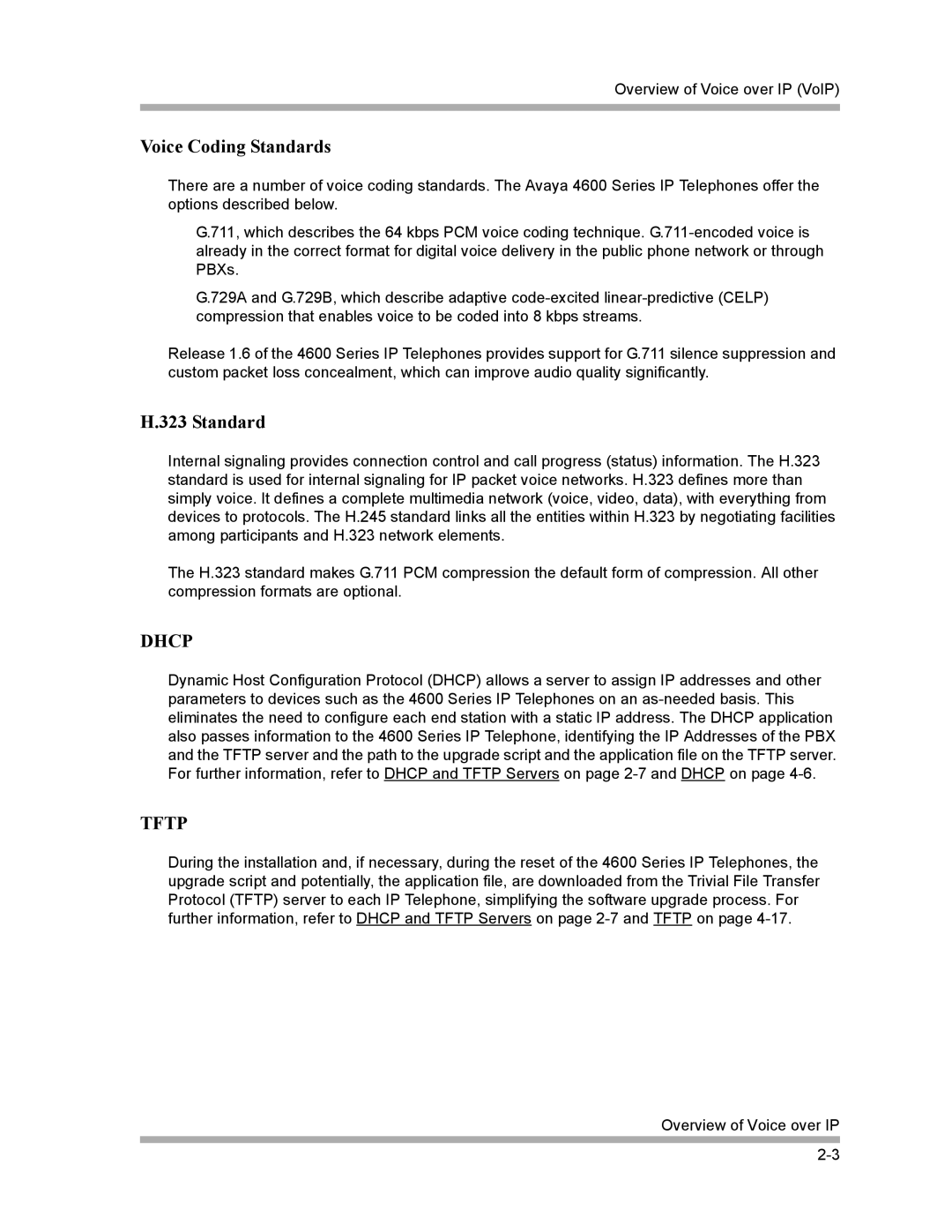
Overview of Voice over IP (VoIP)
Voice Coding Standards
There are a number of voice coding standards. The Avaya 4600 Series IP Telephones offer the options described below.
G.711, which describes the 64 kbps PCM voice coding technique.
G.729A and G.729B, which describe adaptive
Release 1.6 of the 4600 Series IP Telephones provides support for G.711 silence suppression and custom packet loss concealment, which can improve audio quality significantly.
H.323 Standard
Internal signaling provides connection control and call progress (status) information. The H.323 standard is used for internal signaling for IP packet voice networks. H.323 defines more than simply voice. It defines a complete multimedia network (voice, video, data), with everything from devices to protocols. The H.245 standard links all the entities within H.323 by negotiating facilities among participants and H.323 network elements.
The H.323 standard makes G.711 PCM compression the default form of compression. All other compression formats are optional.
DHCP
Dynamic Host Configuration Protocol (DHCP) allows a server to assign IP addresses and other parameters to devices such as the 4600 Series IP Telephones on an
TFTP
During the installation and, if necessary, during the reset of the 4600 Series IP Telephones, the upgrade script and potentially, the application file, are downloaded from the Trivial File Transfer Protocol (TFTP) server to each IP Telephone, simplifying the software upgrade process. For further information, refer to DHCP and TFTP Servers on page
Overview of Voice over IP
